A great photograph is very often not a matter of luck or great camera equipment but a result of hard work. Most wildlife photographers – including myself – are working in large-scale projects. This means that I rarely just go for a walk in the forest to take “some photographs of some animal”. I mostly have a target species and a plan that I have thought through, over and over again. Lets have a look on how that works:
My photographic projects often start with a first phase that is an idea, an inspiration, something that I have seen and that I would like to capture with my camera. If I get hooked on the idea, then the work continues with phase two. Phase two contains a lot of research and planning. The target species needs to be located and the location needs to be suitable. Internet is a great resource for species research. The best places to photograph are generally the ones without other people. Research often includes behavioral studies of the animal in order to find out how the animal moves, where it rests, where it feeds and so on… Needless to say, photography becomes much easier if you know a lot about the species you want to photograph. Research and behavioral studies are time demanding but they are fun too – at least for me. After many years of birdwatching and university studies in biology I have a great interest in nature and quite a good feeling how to spot its inhabitants. Once you have located the species and the area and if you manage to come up with a plan, you can enter phase three, the site details of the location. This often includes the construction of a “species magnet” (feeder, water hole, resting place etc) and a wooden photo hide. Hides are very convenient for wildlife photography as you get “invisible” inside and you can solely concentrate on your target species. Furthermore you can design the hide and the location exactly as you like. At this point I often have a detailed vision of the photograph in my head and I try to translate this vision into a real photograph. Once the feeder and the hide are finished you can finally start to photograph. The planning of a photograph takes often weeks whereas the photograph itself only a split second!
For the last weeks I have been working on a new hide project in a forest in Scania, Sweden. The idea is to attract the forest animals to an artificial water pool where they drink and bathe and hopefully can be photographed beautifully at eye level across the water. I therefore named the photo project “Waterworld” after the lousy movie with Kevin Costner. I also plan to place seeds, nuts and other snacks for birds, red squirrels and pine martens in the area. I am really excited about this project, found a great location with really great and very supportive landowners (Thank you!). To show you how much physical work this phase of the project is, I like to share some photographs of the construction of the hide with you…
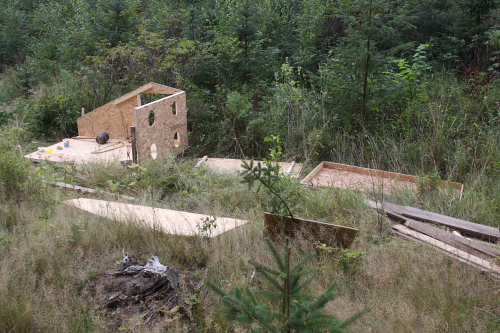
The first day: Construction in the forest has started. I have measured, cut and premounted the different parts of the hide at home. Now the walls, roof and bottom need need to be mounted in the field.
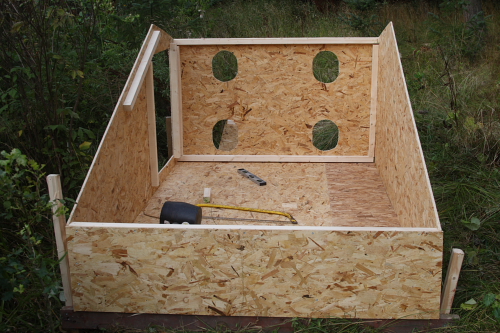
The hide is 2,4 x 1,6m x 1,2m in size (length x width x max height)
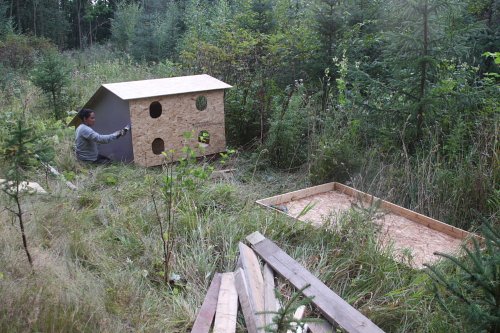
I should have become an architect 😉 Fiancee and fellow photographer Susanne HSchwieler is painting the hide.
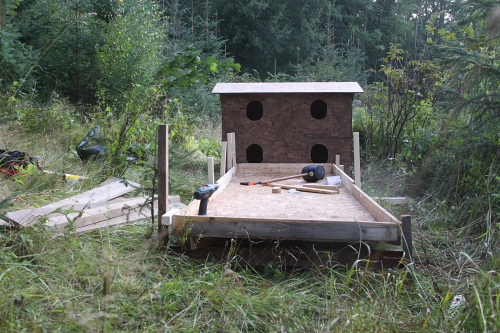
The second day: The water pool is getting constructed.
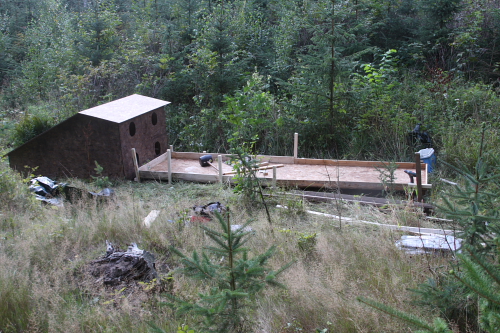
The water pool is 4,9m x 1,2m in size.
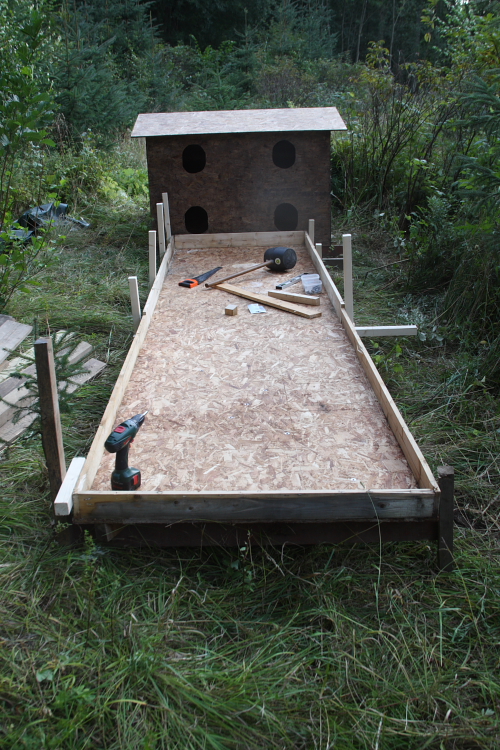
Four openings for lenses in the hide. The lower ones are for eye-level photography just above the water. The upper ones for feeding animals at the feeders around.
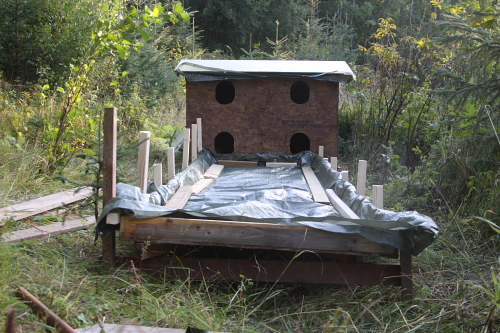
Tarps will keep the hide dry and the water in the water pool.
More photographs of “Waterworld” are soon to come when the hide and the pool are finished.
